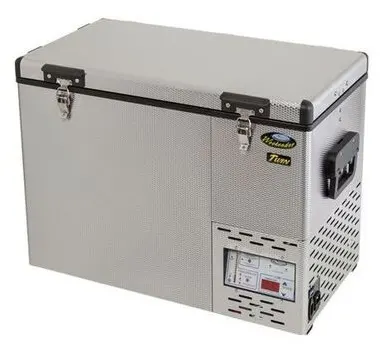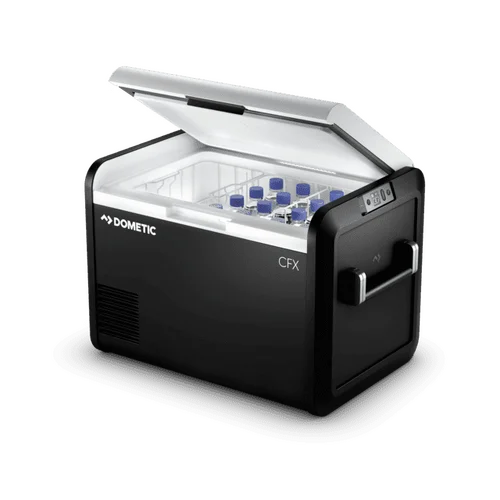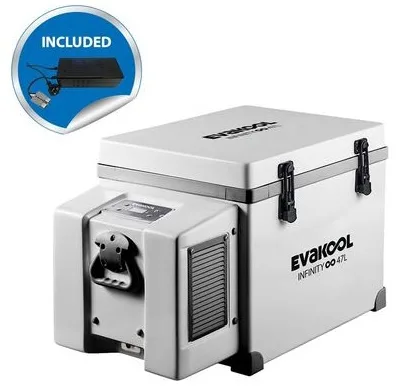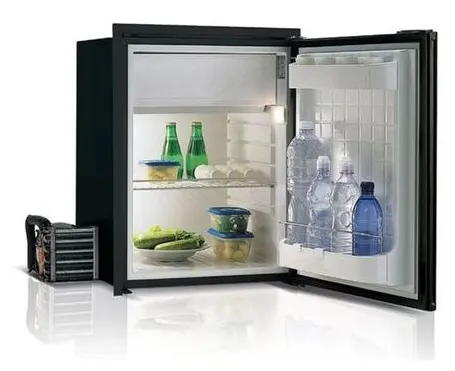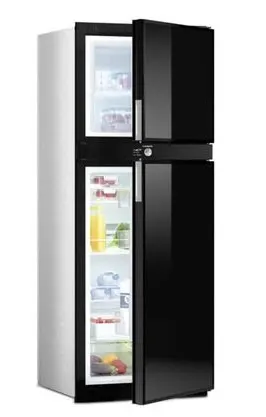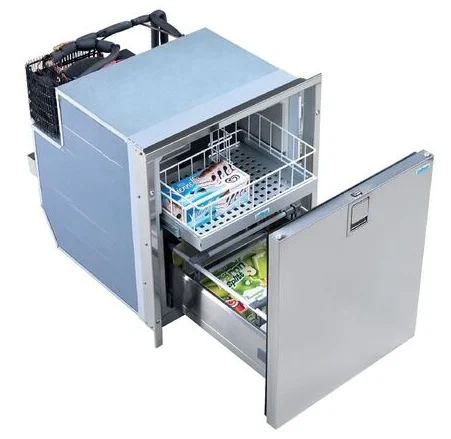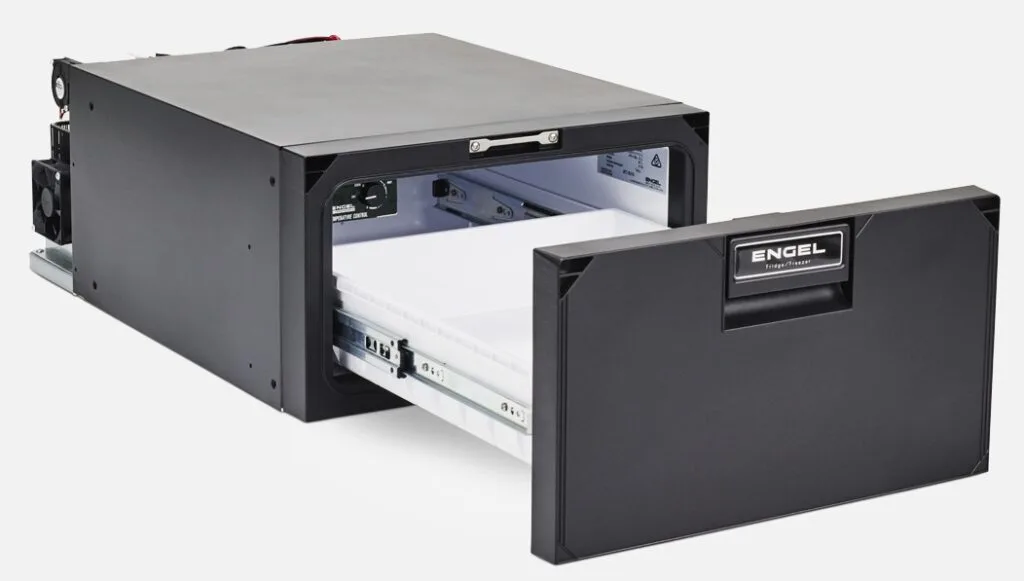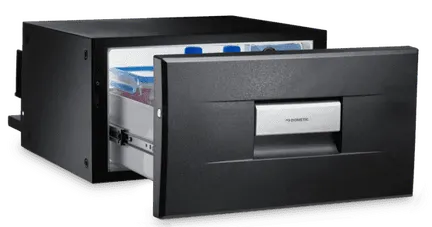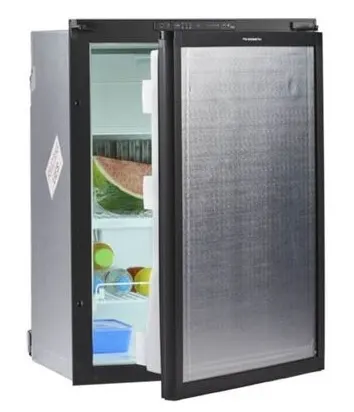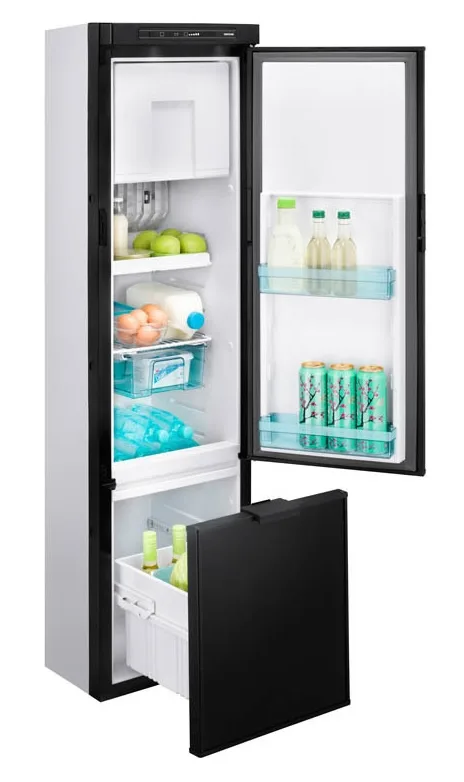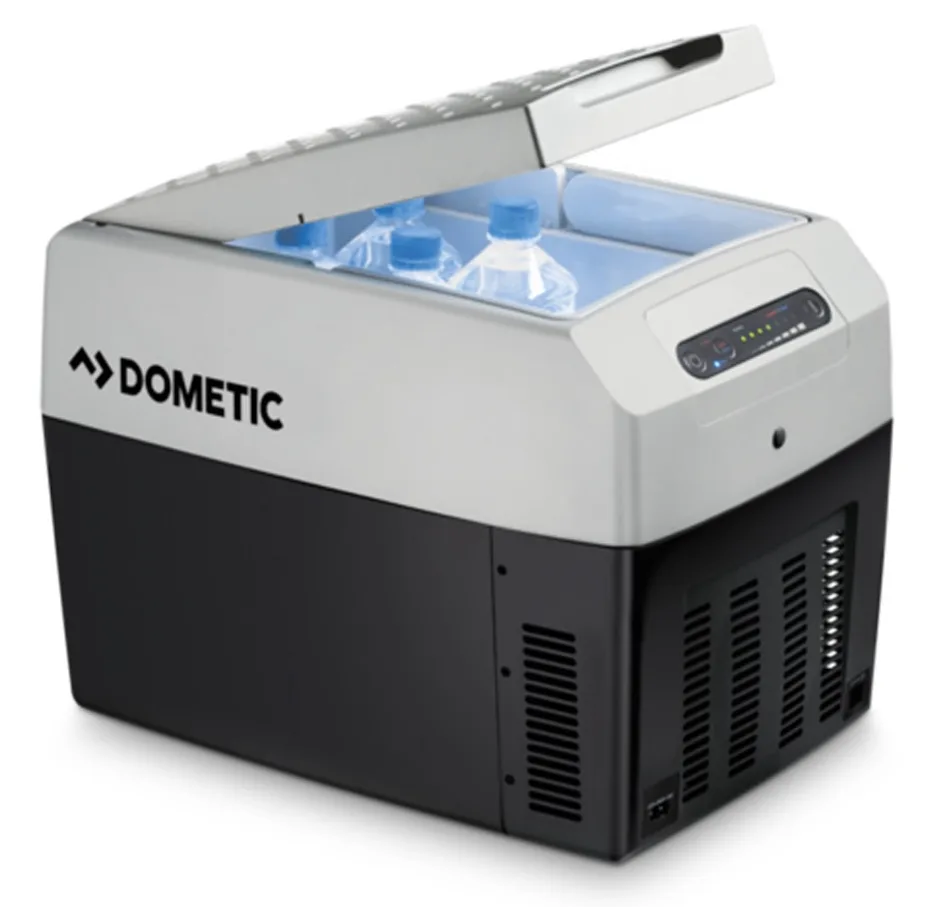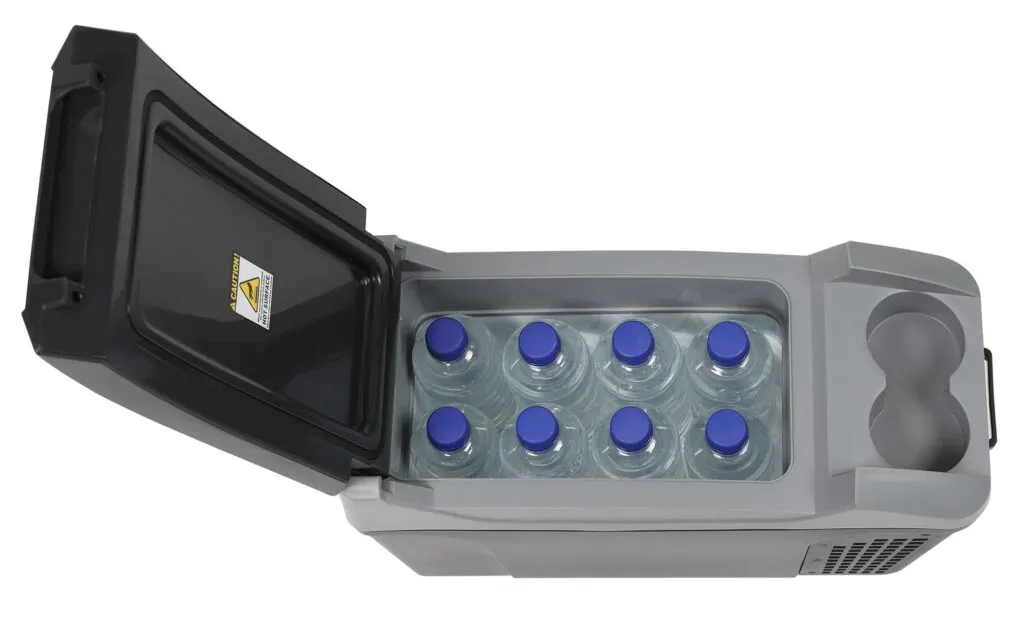When fitting out a campervan in Australia, you have several options for fridges, each with its own features and benefits.
When doing my own research on these fridges I found myself getting so confuddled by the different types and why you would use each different type.
So, hopefully my research will clarify things a little bit for you.
Here are the main types of campervan fridges:
- Compressor
- Absorption
- Thermoelectric
They come in 3 different ‘shapes’:
- Chest
- Upright
- Drawer
And they are powered in 3 different ways:
- LPG
- 240V
- 12V/24V
The table below gives you a general overview of these different types.
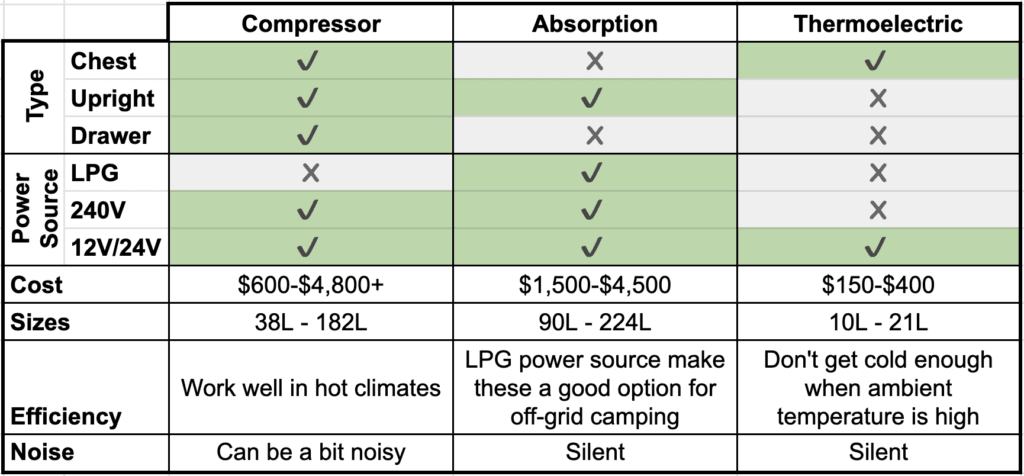

In this article I’ve shown a number of examples of different fridges that you can purchase. However, if you want to see the full spreadsheet of all the campervan fridges that I could find online here in Australia… well I’ve put them all into a spreadsheet.
The spreadsheet has columns for the type of fridge, brand, capacity, dimensions and power source; so that you can sort and filter to find the fridges that fit your criteria. We also included the price and links to where you can buy each fridge.
Just sign up for our newsletter below and we’ll send you the spreadsheet for free.
Now let’s have a look at each of the different types of fridges…
Compressor Fridges
Compressor fridges work much like the refrigerator in your home but are designed to run on two power sources (240V or 12V/24V), which is why they’re sometimes referred to as 2-way fridges.
Here’s a simple-ish explanation:
A compressor fridge uses a motor-driven compressor to circulate a refrigerant through a series of coils. When the refrigerant is compressed, it becomes hot and is pushed through condenser coils where it releases its heat into the surrounding air outside the fridge. This cooled-down refrigerant then moves into evaporator coils inside the fridge, where it expands and absorbs heat from the fridge’s interior, making it cold. The compressor repeats this cycle continuously to keep the fridge at the desired temperature.
In essence, the compressor fridge transfers heat from inside the fridge to the outside, keeping your food and drinks cool. These fridges are efficient, cool quickly, and work well even in hot climates, which is why they’re a popular choice for campervans.
Compressor fridges come as either a chest fridge (opens from the top), an upright (opens at the front like a normal fridge) or a drawer.
Chest, Upright or Drawer – which is the best?
You may have heard that chest fridges are generally more efficient at keeping food cold compared to upright fridges. This is because when you open a chest fridge, the cold air tends to stay inside because it sinks to the bottom, minimising the entry of warm air from outside.
In contrast, opening an upright fridge allows cold air to escape more easily. This means chest fridges lose less cold air during use, leading to less frequent and shorter cooling cycles, which enhances efficiency.
Additionally, chest fridges often have more consistent and thicker insulation around all sides, unlike upright fridges, which rely on door seals that can let in heat. The better insulation helps maintain a stable internal temperature. Furthermore, the natural circulation of cold air in a chest fridge, where colder air stays at the bottom, helps maintain a more uniform temperature throughout. These factors combined make chest fridges more efficient at keeping food cold, reducing energy consumption and maintaining consistent temperatures, which is particularly beneficial for campervans and off-grid applications.
The annoying thing about chest fridges though, is that you can’t put anything on top of them (or if you do, you have to move them off to open the fridge) so that can really limit where you put them, and how much space they take up.
This is where drawers are so good, IMO. When you open a drawer fridge, the cold air tends to stay inside the drawer compartment rather than spilling out, helping to maintain the internal temperature more effectively and reducing the amount of energy needed to re-cool the compartment after it has been opened. They are expensive though, as you will see below.
- Pros: Efficient cooling, works well in high ambient temperatures, fast cooling, and can operate on various power sources (12V, 24V, 240V).
- Cons: More expensive, can be noisy.
There are so many different compressor fridges to choose from that I’m just going to include a range of examples below.
Compressor Fridges – Chest
Compressor Fridges – Upright
If you have the space, you could go for an almost full-size fridge if you want to…
Compressor Fridges – Drawer
Absorption Fridges
Absorption fridges work using a heat source to drive the cooling process, rather than a motorised compressor. Here’s a simple explanation:
An absorption fridge (sometimes called a 3-way fridge) uses a heat source, which can be gas or electricity (240V or 12V/24V) to heat up a mixture of water, ammonia, and hydrogen gas. This heating causes the ammonia to evaporate. The ammonia gas then travels through a series of coils, where it cools down and turns back into a liquid. As it does this, it absorbs heat from the fridge’s interior, making it cold. The liquid ammonia then mixes back with the hydrogen gas, and the cycle repeats.
In essence, an absorption fridge transfers heat from inside the fridge to the outside using a chemical process driven by heat, keeping your food and drinks cool. These fridges are silent and can run on gas, making them a good option for off-grid camping, though they are generally less efficient than compressor fridges.
Absorption fridges need to be level to operate efficiently, which is easier to manage in an upright configuration, so you will find most absorption fridges are uprights.
- Pros: Silent operation, can run on gas which is useful for off-grid camping.
- Cons: Less efficient in high ambient temperatures, slower cooling, and can be more sensitive to being level.
- Since they have gas, they need to be installed by a certified gas technician.
Absorption Fridges – Upright
Thermoelectric Coolers
Thermoelectric fridges work using a technology called the Peltier effect, which involves electrical current and special materials. Here’s a simple explanation:
A thermoelectric fridge uses an electric current to create a temperature difference between two sides of a special device called a Peltier module. When electricity flows through this module, one side gets cold while the other side gets hot. The cold side is used to cool the interior of the fridge, while the hot side has a heat sink and fan to disperse the heat outside the fridge.
In essence, a thermoelectric fridge moves heat from the inside to the outside using electrical energy and a Peltier module. These fridges are quiet and lightweight but generally less efficient and powerful compared to compressor or absorption fridges, making them suitable for short trips or where only mild cooling is needed.
- Pros: Lightweight, inexpensive, silent.
- Cons: Less efficient, cannot cool as much below ambient temperature, high power consumption.
Thermoelectric Coolers – Chest
Thermoelectric fridges are typically found in chest models since chest models help retain cool air more effectively when opened, which is crucial given the lower cooling power of thermoelectric fridges compared to compressor or absorption fridges.
Upright thermoelectric fridges are less common because maintaining an even temperature throughout a vertically oriented space is more challenging with thermoelectric cooling. The design and thermal dynamics of upright models would lead to less efficient cooling and greater energy consumption, making them less practical.
Popular Brands in Australia
- Dometic: Offers a range of compressor and absorption fridges.
- Engel: Known for durable and reliable compressor fridges.
- Waeco: Another reputable brand offering compressor fridges.
- Evakool: Offers a variety of portable fridges and coolers.
- Bushman: Known for efficient and durable fridge-freezers.
Considerations for Choosing a Fridge
- Power Source: Decide between gas, 12V, 24V, or 240V depending on your power setup.
- Size and Capacity: Choose a size that fits your space and meets your storage needs.
- Efficiency: Look for energy-efficient models to minimize power consumption.
- Cooling Performance: Consider the cooling capability in different ambient temperatures.
- Budget: Balance the features you need with your budget.

Selecting the right fridge for your campervan will depend on your specific needs, travel habits, and how you plan to power it.

Don’t forget, you can grab the full spreadsheet of all the campervan fridges with columns for the type of fridge, brand, capacity, dimensions and power source; so that you can sort and filter to find the fridges that fit your criteria. We also included the price and links to where you can buy each fridge.
Sign up for our newsletter below and we’ll send you the spreadsheet for free.
Just a heads up: If you’re not determined to have a particular make or model, you could see what’s on special at the time that you’re ready to purchase. Easter, End of Financial Year (end of June), Black Friday (end of November) and Boxing Day sales are all good ones to look out for and most of these retailers will have sales at those times.


